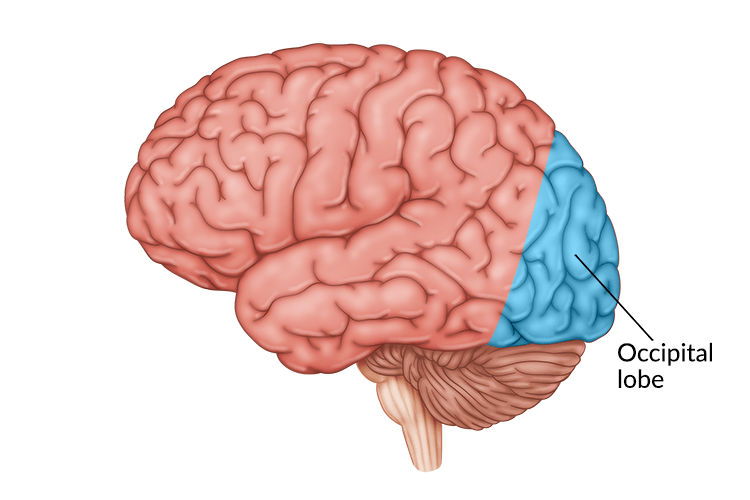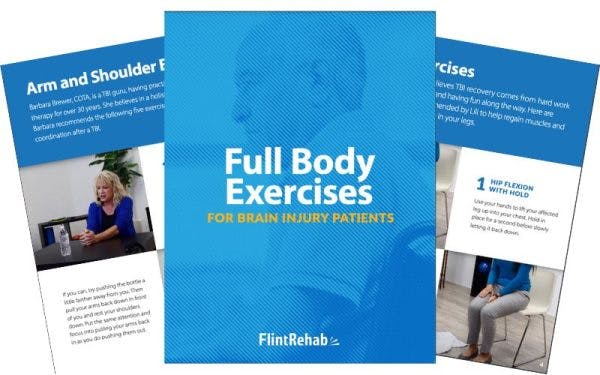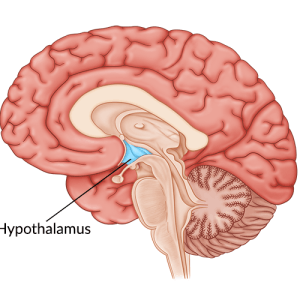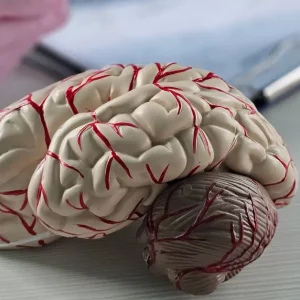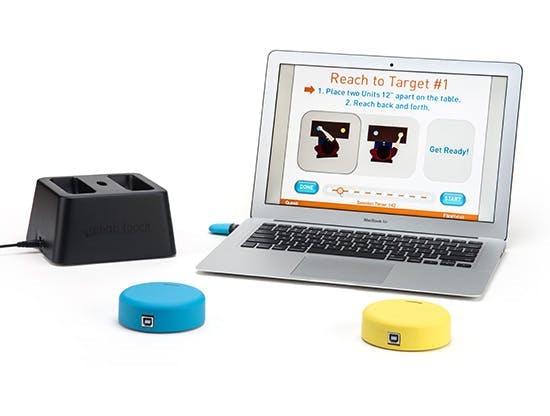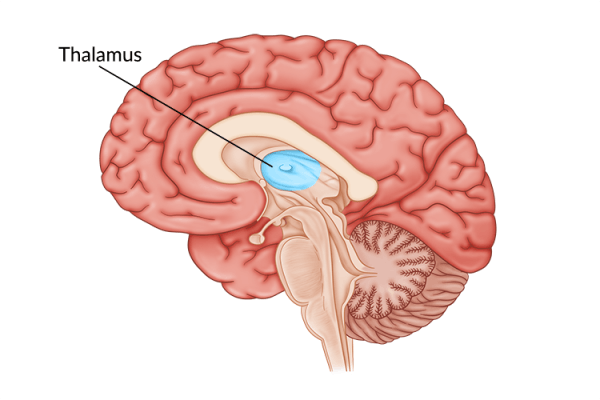Individuals with occipital lobe damage often experience problems with their vision. While injury to other areas of the brain may result in a wide variety of secondary effects, damage to the occipital lobe is unique because it generally only affects vision.
However, vision problems can manifest in different ways. This article will focus on describing the types of visual changes that may occur following occipital lobe damage. Recommended treatment methods will also be outlined.
Please use the links below to jump directly to any section of this article:
Understanding the Occipital Lobe
The occipital lobe, located in the rear portion of the cerebral cortex, is primarily responsible for visual functions. It contains the primary and secondary visual cortices, which are essential for processing visual information.
After being processed, visual information leaves the occipital lobe via two major pathways: the dorsal and ventral streams. The ventral stream is a pathway that leads to the temporal lobe. It carries information related to object form, color, and recognition. Essentially, it helps the temporal lobe determine “what” is being seen.
The dorsal stream, on the other hand, carries information regarding where objects are located in space. It flows into the parietal lobe, where the information is further processed.
Since the occipital, parietal, and temporal lobes interact closely together, the symptoms of occipital lobe damage can overlap with those associated with parietal or temporal lobe damage. A CT scan or MRI can help determine precisely which areas of the brain have been damaged.
Want 20 pages of brain injury recovery tips in PDF form? Click here to download our free ebook “15 Things Every TBI Survivor Must Know” (link opens a pop up for uninterrupted reading)
Symptoms of Occipital Lobe Damage
Occipital lobe damage symptoms involve problems with vision and perception. Vision problems result from deficits in the visual field, while visual perceptual challenges result from an inability to adequately interpret what is being seen.
The most common symptoms of occipital lobe damage are blindness and visual distortions, such as hallucinations. However, there are several other visual and perceptual symptoms individuals can experience as well.
1. Partial Blindness
Partial blindness is a vision problem that occurs when only a portion of the visual field is impaired. It can manifest in several different ways, including:
- Hemianopsia – Loss of half of the visual field, either horizontally or vertically.
- Quadrantanopsia – A quarter of the visual field is lost.
- Peripheral vision loss – The outer edges of the visual field are lost.
- Central vision loss – The middle of the visual field is lost, but the peripheral vision is fine.
Individuals with occipital lobe damage often develop a specific form of hemianopsia referred to as homonymous hemianopsia. This occurs when the same part of the visual field is lost in both eyes. When caused by occipital lobe damage, homonymous hemianopsia is often accompanied by macular sparing, which means that the center portion of the visual field remains intact.
2. Word Blindness (Alexia)
Occipital lobe damage may also lead alexia, a perceptual condition characterized by the inability to read or recognize written words. This occurs when visual information from the occipital lobe is unable to be effectively transmitted to the visual word form area, a portion of the brain responsible for decoding written language.
While there are a number of types of alexia, occipital lobe damage results in pure alexia, also known as alexia without agraphia. Individuals with pure alexia are unable to comprehend written words, but can still spell and write.
3. Color Agnosia
Color agnosia is similar to color blindness. However, while color blindness affects the ability to perceive color, color agnosia affects color knowledge.
In individuals with color agnosia, the mechanisms in the eye that enable individuals to see color remain intact, but the ability to identify and distinguish colors is impaired. Although individuals with color agnosia can still see in color, they may be unable to cognitively match objects with their correct color (e.g. remembering that the grass is green) or label visually presented colors accurately.
4. Akinetopsia (Motion Blindness)
This rare condition results in the inability to perceive motion within the visual field. Instead, individuals with akinetopsia might see motion as a series of still images, like something moving under a strobe light. In severe cases, those with akinetopsia might not be able to detect motion at all, but their vision of stationary objects would remain intact.
5. Simultanagnosia (Balint’s syndrome)
Common after both parietal and occipital lobe damage, Balint’s syndrome is a condition characterized by simultanagnosia, optic ataxia and oculomotor apraxia.
- Simultanagnosia. Involves perceiving only parts of the visual field at a time, rather than viewing it as a whole. This can present as an inability to perceive more than one object at any given point in time. For example, individuals may see only a door or a window when looking at a house, or be unable to perceive their fork while seeing their plate.
- Optic Ataxia. Difficulty reaching for an object despite looking at it.
- Oculomotor Apraxia. Inability to move the eyes in a coordinated, purposeful way (i.e. moving the eyes towards a specific object).
Individuals with Balint’s syndrome would also be unable to read, because they could only process one letter at a time. Although their visual fields may be intact, the perceptual deficits involved in Balint’s syndrome are so severe individuals may function as if they were blind.
Identifying whether vision, perception, or both are affected following occipital lobe damage can help to guide treatment options. While individuals may experience one or more of the above conditions, visual rehabilitation can restore the ability to see more accurately again.
Treatments for Occipital Lobe Damage
Treatments designed to address occipital lobe damage can be divided into two categories: rehabilitative techniques and compensatory strategies. Rehabilitative techniques focus on restoring lost vision and perception skills, while compensatory strategies involve learning how to make up for lost skills. Most treatments for occipital lobe damage focus on using compensatory strategies to maximize one’s remaining vision.
Potential compensatory strategies for individuals whose vision has been affected by occipital lobe damage include:
- Using text-to-speech software to translate written words for those with alexia
- Scanning techniques, which involve intentionally turning the head to visually scan one’s surroundings in order to minimize visual field deficits
- Learning to rely more on other senses, such as the sense of touch, to accurately perceive objects in the surrounding environment
- Wearing specialized prism glasses to shift images that were previously outside of the intact visual field to where they can be seen
While compensatory techniques tend to be used more widely, rehabilitative eye exercises are also recommended for some individuals following occipital lobe stroke. These exercises engage the brain’s neuroplasticity, or its ability to rewire itself, in order to help improve vision.
Other visual restoration therapies, which may involve presenting stimuli to affected areas of the visual field or other specialized trainings, are still being developed. While several restoration therapies have been studied, researchers have yet to find an option that is effective enough to recommend widely. However, these therapies may be an option for recovery in the future.
Neuro-optometrists, vision rehabilitation therapists, and occupational therapists specialized in visual impairments can be excellent resources to learn more about which treatments may be best. Although visual and perceptual skills may not be fully restored, pursuing treatment for occipital lobe damage can result in significant functional improvements.
Understanding Occipital Lobe Injuries
Damage to the occipital lobe can cause blindness and other visual distortions, including hallucinations. Although living with visual problems can be difficult, therapists and neuro-optometrists can help individuals learn to adapt.
Using compensatory strategies as well as rehabilitative techniques can help individuals maximize their current visual abilities and potentially restore lost skills. Furthermore, new treatments are currently being studied to help individuals restore even more of their vision after occipital lobe damage. Talk with a therapist specialized in vision or a neuro-optometrist to find out more about how to recover from visual and perceptual changes following occipital lobe damage.

